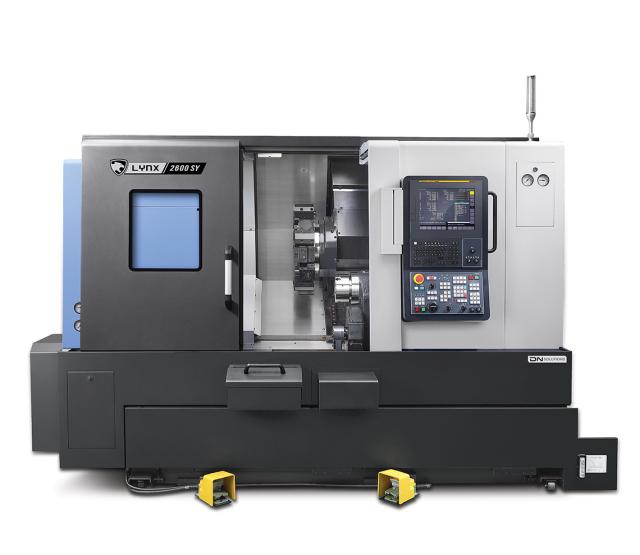FAQ Section
What is the difference between the Lynx 2100SY and 2600SY?
While both models offer Y-axis milling and sub-spindle turning, the 2600SY has a higher bar capacity (3.0″ vs. 2.05″), larger turning diameter (14.8″ vs. 11.8″), and more power (30 hp vs. 20 hp). It's ideal for larger, heavier parts that require greater rigidity and torque.
Is the Lynx 2600SY suitable for lights-out or unmanned operation?
Yes. The machine includes automation-friendly features such as a part catcher, conveyor, barfeed interface, and optional robotic integration. Its rigid construction, smart monitoring systems, and maintenance-friendly design make it highly reliable for unattended shifts.
What kind of parts can be machined on a Lynx 2600SY?
This machine is ideal for multi-operation parts like hydraulic valve bodies, flanged shafts, gearbox components, and turned parts requiring secondary milling or cross-hole drilling. It’s frequently used in aerospace, medical, automotive, and general job shop production.
Does the machine support simultaneous machining on both spindles?
No, the Lynx 2600SY uses a synchronized transfer process—allowing part handoff from the main to sub-spindle—but it does not perform simultaneous dual-spindle cutting. However, it enables continuous cycle operations with back-end finishing.
How does the Tool Load Monitoring System help reduce downtime?
It continuously measures tool cutting forces and compares them to preset thresholds. If wear or breakage is detected, the machine can stop, issue an alarm, or trigger automatic tool change—minimizing scrap and unplanned downtime.

